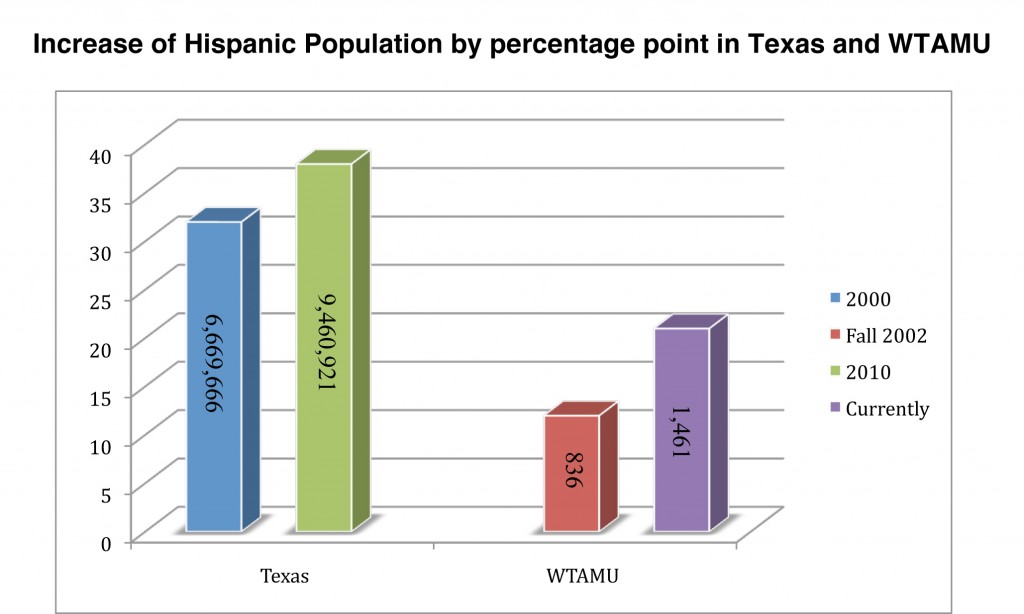
West Texas A&M University set as a goal for the university to become a Hispanic Serving Institution (HSI) by 2014.
The Hispanic population increase in Texas is one of the factors that influenced this decision. According to the U.S. Census Bureau, the Hispanic population has increased six percentage points from the 2000 to the 2010 census. The percentage went from 32 to 38 percent.
“We want the university to be reflective of the community that we serve, and so since the Hispanic population is growing very quickly in the Texas Panhandle, we want to make sure that the university reflects that reality as well,” Dr. Wade Shaffer, WTAMU associate provost, said.
In order to become a HSI, 25 percent of the entire student population has to self-identify as Hispanic. WT is close to achieving this goal. In the past ten years, the university’s Hispanic population has increased nine percentage points, according to university records.
“The last two years the freshman class has been more than 25 percent Hispanic,” Shaffer said. “So a couple of more freshman classes like that we should be very close to achieving that goal.”
The Hispanic enrollment at WT is now at 21 percent.
Being a HSI brings extra benefits to the University. According to the U.S. Department of Education, which administers the program, HSI provides grants to aid Hispanic Serving Institutions to expand educational opportunities and improve Hispanic students prospects.
“It opens the possibility for us to get grant money and to participate in programs that will benefit all of our students that we just don’t have access to right now because we are not HSI,” Shaffer said.
He also said there are many methods WT is using to achieve HSI status. They vary from translating websites and brochures to taking the Mobile Go Center, a trailer with ten computers inside, to schools and communities so students can learn about college and fill their applications.
Although Natalia Rodriguez did not know WT is trying to become a HSI, she said she found the amount of other Hispanics on campus helpful.
“It feels great [to be a Hispanic at WT] because I can bring my Mexican pride,” she said. “Now in my sophomore year I start to realize I was making friends with Hispanic people and I can basically keep my Spanish from being forgotten.”
Similarly, Junior Izaak Chavez said having other Hispanics around was helpful – at first.
“It kind of felt like the whole ‘birds of a feather flock together’ thing,” he said. “I kind of felt a little bit like that because when I started going to classes that is who I hung out with for a little when I first got here. As I started to meet more and more people I kind of drifted off into different sections.”
The number of Hispanic students at WT is recorded by the Office of Institutional Research and is based on self-reported data found on each student’s application for admission. However, some students prefer to leave the ethnicity section blank.
“We feel that probably the actual number of Hispanics on campus is a little higher than the 20-21 percent that will show officially just because some students are uncomfortable checking that box,” Shaffer said. “And that is an issue because some students feel uncomfortable reporting that. If they leave that blank, and a lot of them do, we don’t have a way of knowing that student is Hispanic.”
Another challenge concerning the number of Hispanics at WT is international students’ ethnicity is not recorded by the Office of Institutional Research. Though these students might be Hispanic, they do not count toward the official Hispanic enrollment at WT.













